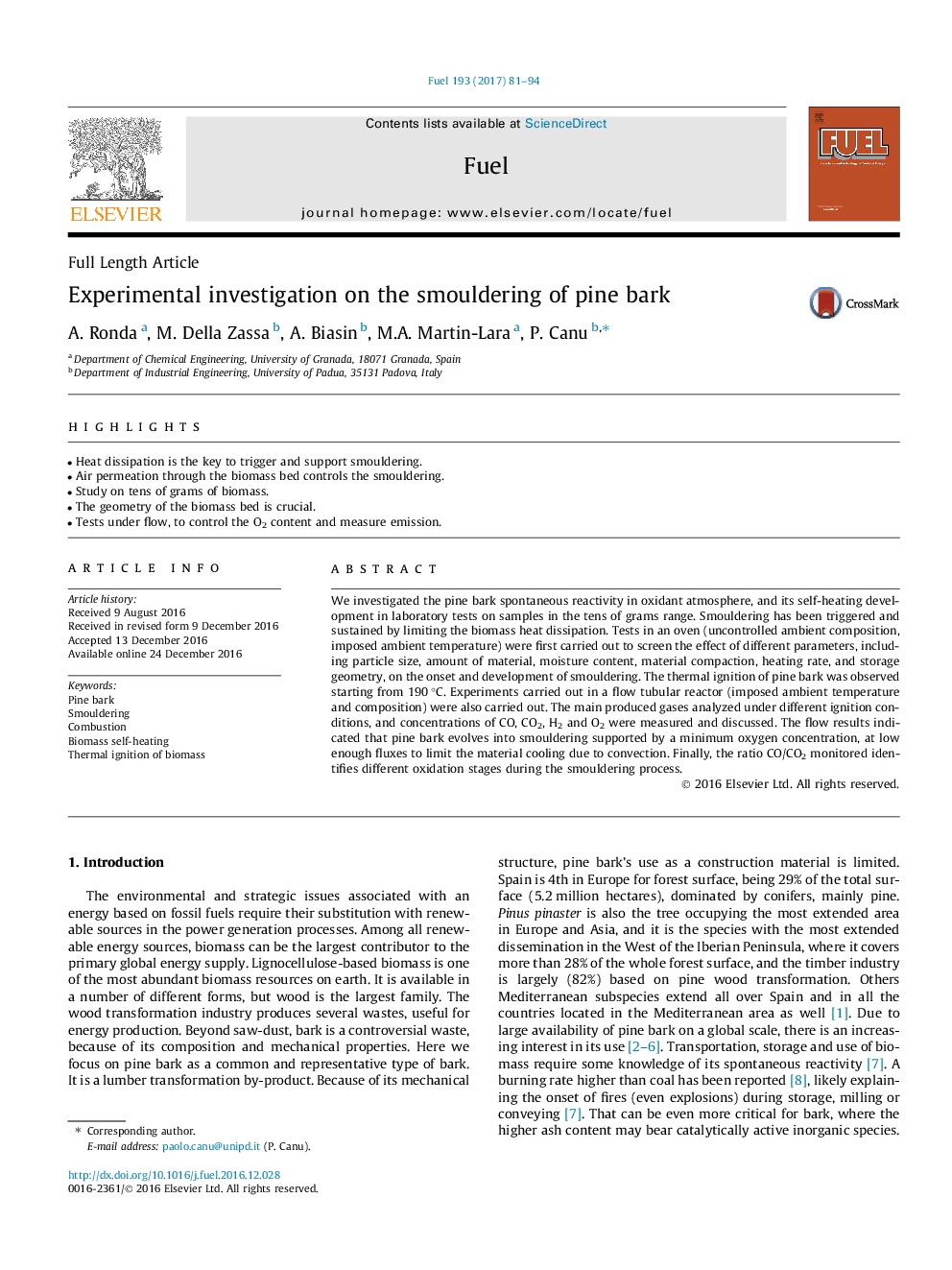| Article ID | Journal | Published Year | Pages | File Type |
|---|---|---|---|---|
| 6474894 | Fuel | 2017 | 14 Pages |
â¢Heat dissipation is the key to trigger and support smouldering.â¢Air permeation through the biomass bed controls the smouldering.â¢Study on tens of grams of biomass.â¢The geometry of the biomass bed is crucial.â¢Tests under flow, to control the O2 content and measure emission.
We investigated the pine bark spontaneous reactivity in oxidant atmosphere, and its self-heating development in laboratory tests on samples in the tens of grams range. Smouldering has been triggered and sustained by limiting the biomass heat dissipation. Tests in an oven (uncontrolled ambient composition, imposed ambient temperature) were first carried out to screen the effect of different parameters, including particle size, amount of material, moisture content, material compaction, heating rate, and storage geometry, on the onset and development of smouldering. The thermal ignition of pine bark was observed starting from 190 °C. Experiments carried out in a flow tubular reactor (imposed ambient temperature and composition) were also carried out. The main produced gases analyzed under different ignition conditions, and concentrations of CO, CO2, H2 and O2 were measured and discussed. The flow results indicated that pine bark evolves into smouldering supported by a minimum oxygen concentration, at low enough fluxes to limit the material cooling due to convection. Finally, the ratio CO/CO2 monitored identifies different oxidation stages during the smouldering process.
